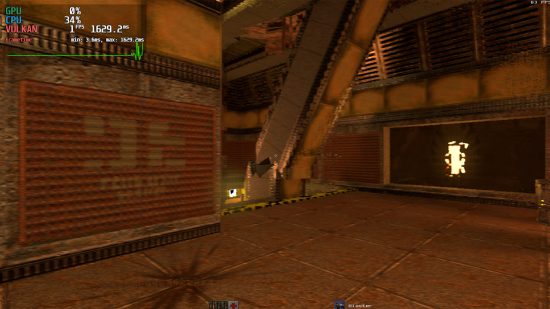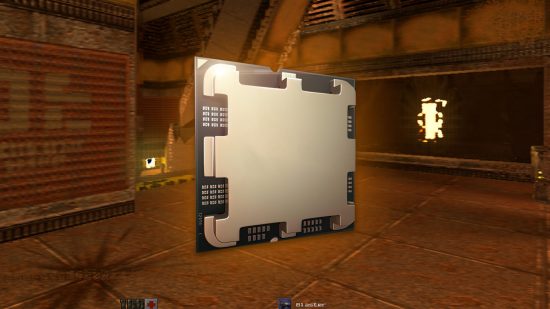Ray tracing may well be more commonplace in games these days but it’s still seen as a hugely difficult graphics feature to process, requiring powerful graphics cards with dedicated ray tracing processors. However, one developer has shown that maybe there’s another way by enabling ray tracing on a CPU.
The developer, named Konstantin Seurer, has been steadily working on adding features to a purely CPU-run Vulkan-based version of the open source Mesa graphics library. By enabling the function Implement VK_KHR_ray_query, the modder has opened up the possibility of running ray tracing functions on CPUs, demonstrating the ability using a certified classic, Quake 2.
Sadly, Konstantin hasn’t provided any details of the hardware they used to achieve their gaming milestone, so we don’t know whether it was only manageable with the likes of a 96-core Threadripper chip or a more modest option such as an Intel Core i5-14600K. Whatever the chosen chip was, though, clearly there’s room for some improvement as Konstantin comments, “Don’t ask about performance”.
Largely, we’ll have to trust their word on that as only a single screenshot of the feature has been provided on the project’s gitlab page. However, that screenshot does show that at the time of the screenshot the frame rate was being recorded at 1fps with 34% CPU utilisation – also note the 0% GPU utilisation, showing this is all running on CPU.

Quite how or why only 34% of the CPU is being used is not made clear. While many games – particularly older ones – don’t support using the extra cores of multi-core CPUs, that’s normally only as regards the main game thread. Once features such as graphics are being processed on the CPU and not being offloaded to a GPU, we might expect that workload to be spread out to other cores – just as how a GPU uses thousands of GPU cores to spread out and process graphics workloads – but that’s perhaps not an option here.
Whatever the case, clearly there’s a way to go before we might be able to consider running games with ray tracing purely on a CPU a viable option. If you want to try it, though, after sitting in approval mode for a few months, Konstantin’s ray tracing additions will finally be available for users to try with the Mesa 24.1 release.
If you’d rather just skip to having a playable ray tracing experience right now, though, we suggest checking out the likes of the Nvidia GeForce RTX 4070 Super or RTX 4080 Super to get a stellar experience for a not ludicrous price.
